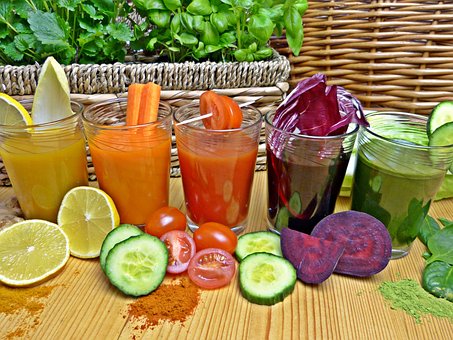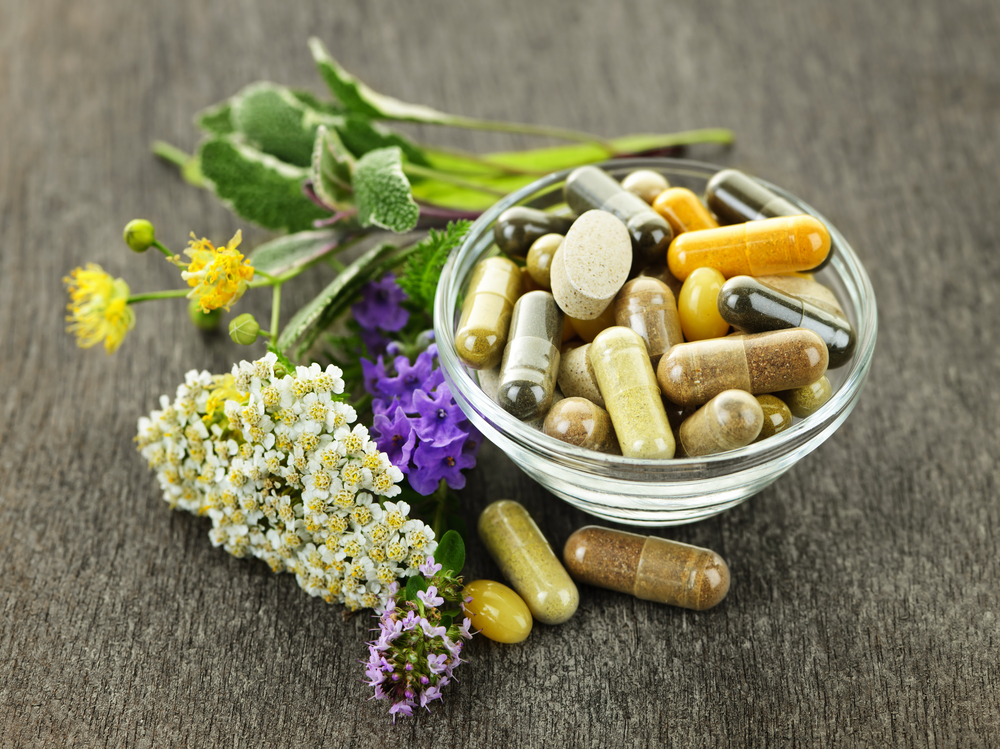Gut health is the hot new health trend. Google searches for “gut health” have increased a lot in the last decade. Some popular TikTok influencers have many millions of followers.
Gut health is trending as a topic of interest, and though some health trends are more harmful than helpful, focusing on gut health could improve your mental and physical wellbeing.
Here’s why having a healthy gut is so important, some signs your gut may need support, and tips to improve your gut health.
Gut Health
Gut health is the term used to describe the state of your digestive microbiome. The microbiome includes trillions of microscopic organisms, mostly bacteria, that play an important role in digestion and also affect your overall health and wellbeing.
In a 2021 survey conducted by the International Food Information Council, 24% of respondents said digestive health was the most important aspect of their overall health.
There is more focus on gut health because digestive issues are experienced more often. For instance:
- The number of hospitalizations and financial costs of inflammatory bowel disease have increased steadily since 1993.
- Between 60 and 70 million people in the United States are affected by a digestive disease and gastrointestinal symptoms are very common.
If you have chronic digestive problems, an autoimmune condition, or mental health issues, you may be able to find relief by looking at your gut.
There is still much to be learned about gut health, but it is clear that supporting gut health can have many benefits, including reducing the risk of chronic illness, according to Rachel Stuck, a registered dietician nutritionist and Director of Wellness and Curriculum at Ixcela.
1. Get enough fiber in your diet.
A type of fiber called fermentable fiber, which most often comes from soluble fiber, “acts as fuel for the healthy bacteria in your gut. This allows the healthy bacteria to grow and proliferate, which is important for gut health.
The bacteria in our gut produce compounds that are beneficial to our health, including vitamins and short-chain fatty acids.
Fiber has numerous benefits that go beyond a healthy gut, including relief from constipation, better regulation of blood sugar, and lower levels of “bad” cholesterol.
Some other fiber-packed foods include:
- Nuts and seeds
- Beans and legumes
- Cruciferous vegetables
- Root vegetables
- Whole fruits
- Whole grains (like oatmeal, brown rice, and quinoa)
2. Eat more fermented foods.
The process of fermentation is a method of food preservation that has been used for thousands of years. In fermentation, foods are partially broken down by bacteria which changes the characteristics of the foods — like milk turning to yogurt or cucumbers to pickles — and also makes them safe to eat for much longer.
Some fermented foods are digested by bacteria that are also considered probiotics. Probiotics are “good” bacteria that live in a healthy gut. Fermented foods improve the health of your microbiome by increasing the diversity of bacteria. This, in turn, reduces inflammation.
Some fermented foods to incorporate into your diet include:
- Yogurt
- Sauerkraut
- Kimchi
- Kefir
- Miso
- Kombucha
- Pickles. Look for the ones in the refrigerated section with “fermented” or “probiotic” on the label.
You can make your own fermented vegetables at home. Fermented foods are good for you if you can eat them without any issues. Try to have one serving of them per day.
Not everyone can tolerate fermented foods. For some people they cause bloating and discomfort. If you’re struggling, Stuck recommends beginning with small portions – even just a single bite. Try different fermented foods until you find what works for you.
If fermented foods are causing you to feel bloated, you can switch to eating a variety of fruits and vegetables.
3. Stay hydrated.
There are many health benefits associated with drinking enough water, such as supporting skin health and aiding brain function. Your microbiome is also influenced by the amount of water you drink.
Water intake is very helpful in supporting digestion and the lining of the intestines. To function properly, the gut needs electrolytes and vitamins, which it absorbs from water.
A simple way to make sure you drink enough water is to carry around a reusable water bottle. The availability of water encourages people to drink it throughout the day.
4. Wind down and destress.
If you’re frequently feeling stressed, it could be taking a toll on your gut health. Irritable bowel syndrome is an example of how stress can be a major trigger for symptom flare ups.
It’s normal to experience some stress, but if your life has constant stressors and you can’t manage them, it can harm your digestion and overall health.
For example, chronic stress can cause:
- Fatigue
- Muscle tension
- Anxiety
- Increased chances of developing heart disease
- Insomnia
- Hormonal imbalances
There are some easy ways to support your gut are by going to bed a little earlier, taking a 10 minute walk after lunch, talking to a therapist, or taking an extra rest day when life gets busy.
5. Exercise
If you want to have a greater diversity of beneficial microbes in your gut, you should consider exercising on a regular basis. Exercise also does a variety of things to support the gut, including:
- Increasing blood flow to the muscles responsible for peristalsis — the contractions of the gut that moves food steadily through the digestive system.
- Promotes restful sleep
You don’t need to do strenuous exercise to get benefits from it. Any exercise is better than no exercise. Find a physical activity that you enjoy and get moving. Just 30 minutes a day of gentle movement like walking or yoga can improve gut health.
6. Eat a diverse range of foods.
Different species of bacteria in your intestines play specific roles in health and require different nutrients for growth.
A healthy microbiome is generally considered to be diverse. The more species of bacteria you have, the more likely it is that they will be able to contribute to your health. If you want a more diverse microbiome, you should eat a variety of different foods.
The Western diet is not very diverse and is high in fat and sugar. An estimated 75% of the world’s food is produced from only 12 plant species and 5 animal species.
While diets in urban areas may be more monotonous, those in rural regions often enjoy a greater diversity of food sources. The gut microbiome diversity is much greater in people from rural regions of Africa and South America than in people from urban areas in Europe or the United States.
A diet that includes a variety of whole foods can help promote a healthy microbiome.
7. Eat lots of vegetables, legumes, beans, and fruit.
Eating plenty of fruits and vegetables is the best way to ensure a healthy microbiome. The fiber in them cannot be digested by the body. Bacteria in your gut can digest fiber, which can stimulate their growth.
Beans and legumes contain a lot of fiber. Some high fiber foods that are good for your gut bacteria include:
A study found that a diet rich in fruit and vegetables can prevent the growth of bacteria that causes disease. Eating apples, artichokes, blueberries, almonds, and pistachios has been shown to increase the level of bifidobacteria in humans.
Bifidobacteria are good for you because they help stop stomach problems and make your digestive system work better.
Many fruits and vegetables are high in fiber. Eating fiber-rich foods helps evil gut bacteria, including bifidobacteria.
8. If you can, breastfeed for at least 6 months.
A baby’s microbiome begins to properly develop at birth. Although it hasn’t been proven, some research indicates that babies might be exposed to bacteria even before they’re born. During the first 2 years of life, an infant’s microbiome is constantly evolving and is abundant in beneficial bifidobacteria that can digest the sugars in breast milk.
Studies have shown that infants who are fed formula have an altered microbiome when compared to infants who are breastfed. The study showed that the infants who were fed formula had fewer bifidobacteria. In addition, breastfeeding is also linked with lower rates of allergies, obesity, and other health problems that may be caused by differences in the gut microbiota.
Breastfeeding helps an infant develop a healthy microbiome, which may help reduce the risk of certain health problems later in life.
Whole grains have been found to promote the growth of bifidobacteria, lactobacilli, and bacteroidetes in humans, according to research. Whole grains have been shown to increase feelings of fullness and reduce inflammation and certain risk factors for heart disease in a number of studies.
Some research shows that gluten-containing grains may negatively impact gut health by increasing intestinal permeability and inflammation in some people. More research is needed to determine if eating grains that contain gluten may also change the gut microbiome in healthy adults who don’t have these conditions.
Whole grains contain carbohydrates that cannot be digested which can help beneficial bacteria to grow in the gut microbiome. These changes to the gut flora may improve aspects of metabolic health such as obesity and diabetes.
10. Eat a plant-based diet.
Intestinal bacteria grow differently based on the type of diet consumed. Animal-based diets promote the growth of different types of bacteria than plant-based diets do. A number of studies have shown that vegetarian diets may benefit the gut microbiome. This may be due to the high fiber content in vegetarian diets.
One 2013 study that was smaller in scale found that people who had a vegetarian diet had lower levels of bacteria that caused disease. These people also had lower levels of inflammation and cholesterol.
A 2019 review found that plant foods contain many nutrients that can support gut health by promoting the growth of beneficial bacteria and reducing the growth of harmful bacteria.
Although the jury is still out, it appears that vegetarian diets may have a positive impact on gut microbiomes. It’s unclear if this is due to a lack of meat intake, or if other factors are at play.
Vegetarian and vegan diets may improve the microbiome. It is unclear if the positive effects associated with these diets are due to the lack of meat intake or if there are other factors involved.
11. Eat foods rich in polyphenols.
Polyphenols are beneficial to health in many ways, such as reducing blood pressure, inflammation, cholesterol levels, and oxidative stress.
Human cells can’t always digest polyphenols. Polyphenols are not absorbed efficiently by the body, so they mostly end up in the colon. There, they are digested by gut bacteria. Some examples of foods rich in polyphenols are:
- cocoa and dark chocolate
- red wine
- grape skins
- green tea
- almonds
- onions
- blueberries
- broccoli
Polyphenols sourced from cocoa can have a positive impact on the human gut microbiome by increasing levels of bifidobacteria and lactobacilli, and reducing levels of clostridia. The microbiome is also changing in other ways that are associated with positive health outcomes. For example, lower levels of triglycerides and C-reactive protein are linked with a healthier microbiome.
Red wine contains polyphenols which have similar effects to increase levels of good bacteria in people with metabolic syndrome.
The gut microbiota breaks down polyphenols efficiently, even though human cells can’t digest them efficiently. The treatments offered by naturopathic doctors could improve a range of heart disease and inflammation related health concerns.
Conclusion
The bacteria in your gut are very important for many aspects of your health. The microbiome refers to the collection of all the microbes that live on and inside the human body. Many studies have now shown that a disrupted microbiome can lead to numerous chronic diseases, including obesity, type 2 diabetes, heart disease, and even cancer.
Eating a variety of fresh, whole foods from plant sources is the best way to maintain a healthy microbiome. Fruits, vegetables, legumes, beans, and whole grains are all good choices.









